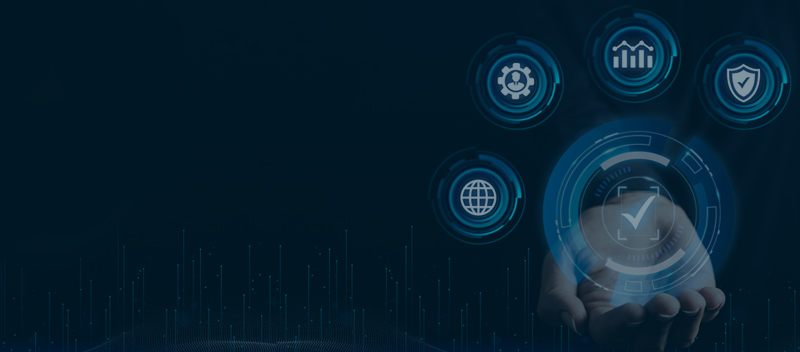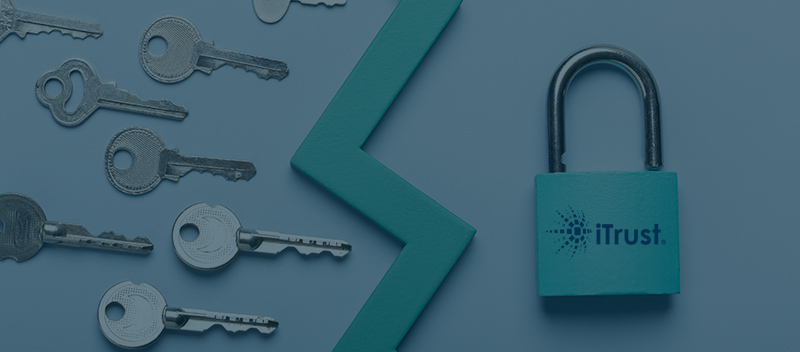Blog Introduction to SOC 2 Pricing: What You Need to Know (Part 1)
Introduction to SOC 2 Pricing: What You Need to Know (Part 1)

SOC 2 compliance is becoming increasingly crucial for businesses aiming to secure customer trust and data protection. SOC 2, which stands for System and Organization Controls 2, sets benchmarks for managing customer data based on five “trust service principles”—security, availability, processing integrity, confidentiality, and privacy.
However, understanding SOC 2 pricing and the costs associated with a SOC 2 audit can be daunting for many organizations. This guide aims to demystify SOC 2 audit costs and provide clear insights to help you navigate the complexities of achieving SOC 2 compliance.
Demystifying SOC 2 Pricing: A Breakdown of Key Factors
Navigating the complexities of SOC 2 compliance can be daunting for many organizations, especially when it comes to understanding the various SOC 2 pricing factors.
What Influences Your SOC 2 Audit Cost?
Understanding the various factors that influence SOC 2 audit costs is essential for businesses planning to achieve SOC 2 compliance. Here are the primary considerations:
— Company Size and Complexity:
Larger organizations or those with intricate operations often face higher SOC 2 audit costs. This is due to the extensive data flows and numerous processes that need thorough examination. Companies with multiple locations or complex IT infrastructures may require more time and resources to audit.
— Scope of the Audit:
The broader the SOC 2 audit scope, the higher the costs. If your audit includes a wide range of systems and controls, expect to invest more. Focusing only on critical systems might reduce costs but could also leave gaps in compliance.
— Type of SOC 2 Report:
The choice between a Type 1 and Type 2 report significantly impacts the pricing. A SOC 2 Type 1 report, which examines the design of your system at a specific point in time, is generally less expensive than a SOC 2 Type 2 report. The latter evaluates the operational effectiveness of these controls over a period, requiring more extensive review and, thus, higher costs.
For more on our SOC 2 compliance services, Click Here
Understanding the Cost Landscape: SOC 2 Pricing Components
By breaking down the major SOC 2 pricing components, businesses can gain a clearer understanding of what to expect.
Unveiling the Hidden Costs of SOC 2 Compliance
Achieving SOC 2 compliance involves various cost components that businesses must consider:
— Preparation Costs:
The initial phase involves significant SOC 2 preparation costs, including the development of documentation and policies. This stage guarantees that, prior to the audit, all required procedures are in place.
Costs here may also involve hiring consultants to guide the organization through the preparation process.
— Audit Fees:
One of the most substantial expenses is the SOC 2 audit fees charged by the independent auditor. These costs pay for the auditor’s time, knowledge, and supplies needed to complete the audit.
Audit fees can vary based on the auditor’s reputation, the complexity of the audit, and the type of report being generated.
— Remediation Expenses:
During the audit, vulnerabilities or non-compliance issues may be identified, necessitating additional costs known as SOC 2 remediation costs. These expenses include fixing gaps in security measures, updating systems, and implementing new controls.
Remediation can be an ongoing expense if the issues are complex and require extended efforts to resolve.
— Ongoing Maintenance Costs:
Post-audit, maintaining SOC 2 compliance involves continuous efforts, leading to SOC 2 ongoing maintenance costs. These costs cover regular monitoring of systems, staff training, and periodic updates to policies.
Staying compliant is not a one-time effort but requires sustained attention and resources over time.
Understanding these cost components helps businesses anticipate and budget for the comprehensive financial requirements of achieving and maintaining SOC 2 compliance.
Decoding the Reports: SOC 2 Type 1 vs. Type 2 Pricing
When it comes to SOC 2 compliance, understanding the differences in SOC 2 Type 1 vs Type 2 pricing is crucial. The costs associated with each type of report can vary significantly due to the scope and duration of the audit.
Type 1 vs. Type 2 SOC 2 Reports: Understanding Cost Differences
Here’s a breakdown of these differences:
Cost Differences:
— Type 1 SOC 2 Reports:
These audits focus on assessing the design of your system and controls at a specific point in time. As a result, SOC 2 Type 1 audits generally involve lower costs due to their limited scope and shorter duration.
— Type 2 SOC 2 Reports:
In contrast, SOC 2 Type 2 audits are more comprehensive, evaluating the operational effectiveness of your controls over an extended period, typically six months to a year. Higher expenses result from the need for greater time and resources for this thorough review.
Benefits and Limitations:
— SOC 2 Type 1 Benefits:
-
- Advantages: Quicker and less expensive to achieve, provides a snapshot of control design, useful for initial assessments or smaller businesses.
- Disadvantages: Does not demonstrate ongoing effectiveness, which may be required by clients or partners seeking long-term assurance.
— SOC 2 Type 2 Benefits:
-
- Advantages: Offers detailed insights into how well controls function over time, providing stronger assurance to stakeholders. It’s particularly beneficial for larger organizations or those handling sensitive data.
- Disadvantages: More costly and time-consuming, requiring ongoing monitoring and documentation.
By understanding these distinctions, businesses can make informed decisions about which report type best aligns with their needs and budget.
Estimating Your SOC 2 Investment
When planning for SOC 2 compliance, having a clear SOC 2 audit cost estimate is essential.
Budgeting for SOC 2 Compliance: Average Costs and Cost Fluctuations
— SOC 2 Audit Cost for Small Businesses:
For small businesses, the cost typically ranges from $7,500 to $15,000. These organizations often have simpler systems and fewer controls to evaluate.
— SOC 2 Audit Cost for Medium Businesses:
Medium-sized businesses can expect to pay between $12,000 and $20,000. The increased complexity of their operations and data flows contributes to higher costs.
— SOC 2 Audit Cost for Large Enterprises:
Large enterprises usually face costs starting at $30,000 and potentially exceeding $100,000. Their extensive infrastructure and numerous compliance requirements demand a thorough, resource-intensive audit.
Factors That Can Increase or Decrease Costs:
1. Industry Regulations:
Certain industries, such as finance and healthcare, have stricter regulatory requirements, which can drive up SOC 2 audit costs due to the need for more rigorous scrutiny.
2. Auditor Experience:
Hiring a highly experienced auditor may result in higher upfront costs, but their expertise can streamline the process and potentially reduce remediation expenses.
3. Scope of the Audit:
A broader audit scope, encompassing more systems and controls, will naturally increase costs. Conversely, a more focused audit can help manage expenses.
4. Geographical Location:
The cost of living and business operations in different regions can also affect the overall cost.
5. Existing Controls and Processes:
Companies with well-established security controls and processes may find their audit costs lower than those needing significant improvements.
Optimizing Your Journey: Cost-Saving Strategies for SOC 2 Certification
Implementing SOC 2 certification cost-saving strategies can significantly reduce your compliance expenses.
Smart Strategies to Reduce SOC 2 Compliance Costs
— Internal Preparation and Readiness Assessment:
Conducting a SOC 2 readiness assessment internally allows organizations to identify gaps and areas of improvement before the audit. This proactive approach helps optimize costs by addressing issues early, reducing the need for extensive remediation.
Self-assessments can also streamline the audit process, making it more efficient and less costly.
— Leveraging Existing Security Controls:
Utilize existing security measures that already meet SOC 2 requirements. By integrating SOC 2 controls with your current systems, you can avoid unnecessary expenditures on new tools and technologies.
Documenting and showcasing the effectiveness of these controls during the audit can further reduce costs and enhance compliance efforts.
— Choosing the Right Auditor:
The selection of an experienced and qualified auditor is crucial. A well-versed auditor in your industry can provide valuable insights and efficiencies, ultimately lowering costs. When considering SOC 2 auditor selection, prioritize those who understand your specific business needs and have a proven track record.
Engaging with the right auditor can also lead to fewer rounds of revisions and faster completion times, contributing to overall cost savings.
By implementing these SOC 2 certification cost-saving strategies, businesses can achieve compliance more efficiently and economically.
The Value Beyond the Cost: The ROI of SOC 2 Compliance
Achieving SOC 2 compliance offers significant returns on investment (SOC 2 ROI) beyond just meeting regulatory requirements.
Unlocking the Long-Term Benefits of SOC 2 Certification
— Increased Trust and Credibility with Stakeholders:
One of the primary SOC 2 benefits is the increased trust and credibility it brings to your organization. By demonstrating a commitment to data security, SOC 2 certification can attract potential clients and investors who value security and compliance.
This certification shows stakeholders that you take data protection seriously, which can lead to stronger business relationships and new opportunities.
— Enhanced Security Posture:
The SOC 2 compliance process requires companies to implement robust SOC 2 security controls. These controls not only help you meet compliance standards but also enhance your overall security posture.
This improvement reduces the risk of data breaches and other security incidents, protecting your organization’s reputation and avoiding costly repercussions.
— Improved Operational Efficiency:
Achieving SOC 2 compliance often involves streamlining security practices and processes, leading to SOC 2 operational efficiency. These efficiencies can result in cost savings over time as your organization benefits from more effective and responsive security measures.
Well-defined and documented security practices can also simplify future audits and compliance efforts, saving time and resources.
Mastering SOC 2 Compliance Costs
Understanding SOC 2 pricing components is crucial for effective SOC 2 savings, budgeting, and successful compliance. By breaking down the costs for different company sizes, examining factors that influence these expenses, and exploring cost-saving strategies, businesses can better prepare for their SOC 2 journey.
Stay tuned for Part 2, where we’ll delve into additional costs to consider beyond the core components, further strategies to optimize your SOC 2 investment, and much more.
Contact Our Experts today.
FAQs About SOC 2 Pricing
This section addresses some of the most common SOC 2 pricing FAQs to help you better understand the costs and processes involved.
How long does a SOC 2 audit typically take?
The duration of a SOC 2 audit can vary depending on the complexity of your organization’s systems and controls. Generally, a SOC 2 Type 1 audit takes about 2-3 months to complete, while a SOC 2 Type 2 audit, which evaluates controls over a period of time, can take 6-12 months. The timeline includes preparation, assessment, remediation (if necessary), and the final audit.
Are there any hidden costs associated with SOC 2 compliance?
While most SOC 2 costs are straightforward, there can be additional expenses that might not be immediately apparent. These could include:
-
- Remediation Costs: Addressing gaps or deficiencies found during the readiness assessment.
- Consulting Fees: If you hire external consultants to assist with preparation.
- Technology Upgrades: Implementing new tools or systems to meet compliance requirements.
- Training Programs: Educating your staff about new policies and procedures.
What resources are available to help me prepare for a SOC 2 audit?
Several resources from TrustNet can assist you in preparing for a SOC 2 audit, including:
SOC 2 Compliance 101: All You Need to Know
All You Need to Know About SOC 2 Audits
SOC 2 Readiness Assessment: All You Need to Know
And more insights here: https://trustnetinc.com/insights/




